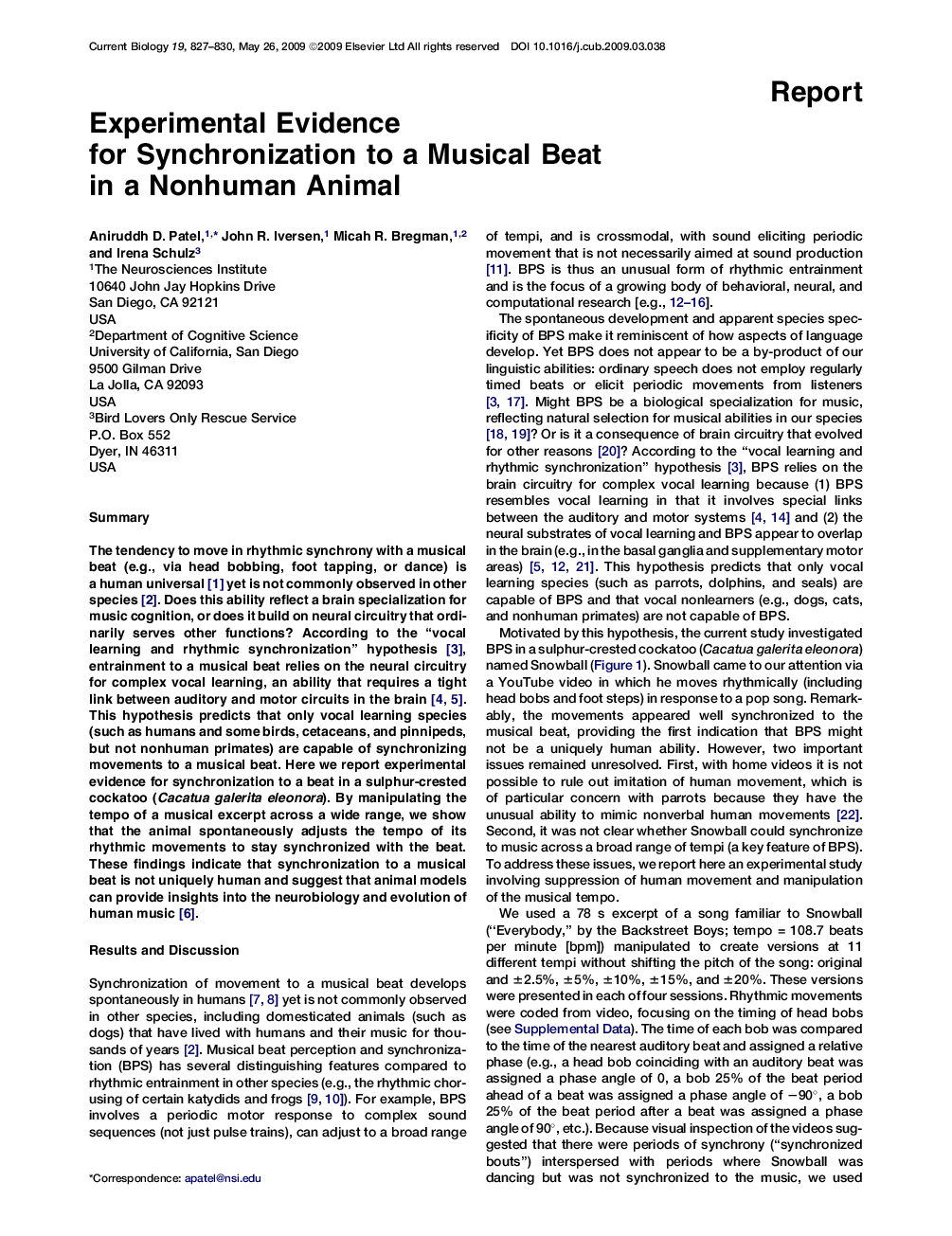| کد مقاله | کد نشریه | سال انتشار | مقاله انگلیسی | نسخه تمام متن |
|---|---|---|---|---|
| 2043617 | 1073368 | 2009 | 4 صفحه PDF | دانلود رایگان |

SummaryThe tendency to move in rhythmic synchrony with a musical beat (e.g., via head bobbing, foot tapping, or dance) is a human universal [1] yet is not commonly observed in other species [2]. Does this ability reflect a brain specialization for music cognition, or does it build on neural circuitry that ordinarily serves other functions? According to the “vocal learning and rhythmic synchronization” hypothesis [3], entrainment to a musical beat relies on the neural circuitry for complex vocal learning, an ability that requires a tight link between auditory and motor circuits in the brain 4 and 5. This hypothesis predicts that only vocal learning species (such as humans and some birds, cetaceans, and pinnipeds, but not nonhuman primates) are capable of synchronizing movements to a musical beat. Here we report experimental evidence for synchronization to a beat in a sulphur-crested cockatoo (Cacatua galerita eleonora). By manipulating the tempo of a musical excerpt across a wide range, we show that the animal spontaneously adjusts the tempo of its rhythmic movements to stay synchronized with the beat. These findings indicate that synchronization to a musical beat is not uniquely human and suggest that animal models can provide insights into the neurobiology and evolution of human music [6].
Journal: - Volume 19, Issue 10, 26 May 2009, Pages 827–830